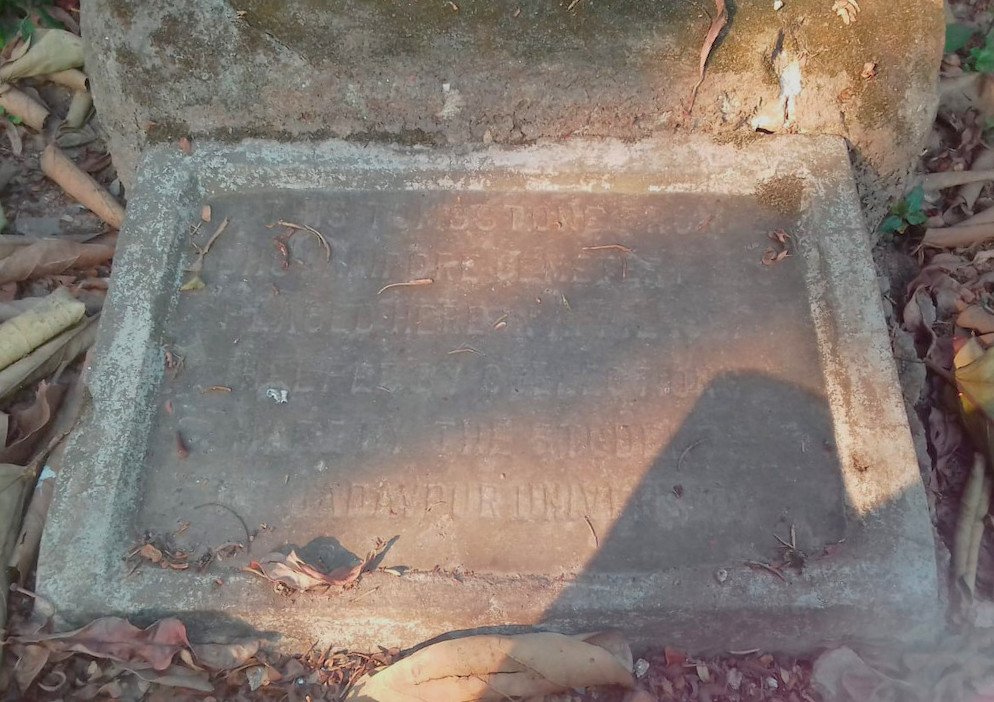

Views in the cemetery.
South Park Street Cemetery is a Christian burial ground on the outskirts of central Kolkata, opened on previously marshy ground in 1767. Soumitra Das describes it as "a serene and romantic spot submerged in an aqueous haze" (67). Such a space was evidently needed in order to relieve the pressure on the graveyard of St John's Church in the heart of the town, and indeed even this new area needed to be extended during the next decade. According to the information plaque at the entrance, it continued to be used for interments only until 1790. Some sources, however, find that it was still in use in the early nineteenth century. Arunava Bose, for example, suggests that it was used until "about 1830." Bose describes it as "probably the largest Christian cemetery outside Europe and America in the 19th century" (160). It is the last resting place of some of the well-known (and also many of the long-forgotten) colonialists who died during those years.
Walter Savage Landor Dickens's tombstone


Bose gives a fascinating account of the people who were buried in South Park Street Cemetery: "Among the interesting professions mentioned in the epitaphs are: breeder of cattle, jail-keeper, silversmith, schoolteacher, architect, translator, livery, printer, head tide-waiter, park superintendent, cooper, postmaster and surgeon" (160). But among the elaborate neo-classical, Gothic and Indo-Saracenic grave-markers is one singularly unimposing and indeed pathetic one. The last resting place of the novelist Charles Dickens's fourth child, and second son, Walter Savage Landor Dickens, was in the Bhowanipore Cemetery, South Calcutta; however, in April 1987 students from Jadavpur University (the alma mater of Oindrila Ghosh, who contributed these photographs) collected funds to restore and move the headstone to this spot, where it could more easily be visited. Here, it not only recalls Charles Dickens's own indirect connection with India, but sets his son's memorial among those of other European figures who had been a part of India's cultural history during this period. A newspaper reporter deciphers the "fading words on the chipped and cracked tombstone" as beginning, “In memory of Lieut. Walter Landor Dickens, Second Son of Charles Dickens,” but finds that the only legible words after that are “at the officers… on his way… December…” (Dutta).
The cemetery is now a heritage site, protected by the Archaeological Survey of India (ASI). The idea for such an organisation goes back to the Asiatic Society, founded in Calcutta by the eminent scholar William Jones in 1784: Jones himself is also buried here.
Related Material
You may use these images without prior permission for any scholarly or educational purpose as long as you (1) credit the photographer and (2) link your document to this URL in a web document or to the Victorian Web in a print one. [Click on the images to enlarge them.]
Bibliography
Bose, Arunava. Tilottoma Kolkata. Bilaspur, Chhattisgarh: Evincepub Publishing, 2019.
Das, Soumitra. A Jaywalker's Guide to Calcutta. Kolkata: Eminence Designs, 2007.
Dutta, Ananya. "Kolkata's link with Charles Dickens." The Hindu. 8 February 2012. Web. 12 February 2021.
Created 11 February 2021